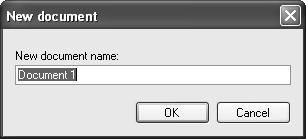 Analog Devicesunveiled the new Blackfin BF51x series, the newest membzers of their convergent-processor family. Blackfin processors are very popular when building Asteris-based appliances, including the Digium Asterisk Appliance AA50 and Astfin. The Blackfin convergent-processor architecture offers reduced cost, power consumption, and software complexity. Although the processor is popular in creating Asterisk appliances, it can be used for a variety of low-cost, low-power consumption required applications.
Analog Devicesunveiled the new Blackfin BF51x series, the newest membzers of their convergent-processor family. Blackfin processors are very popular when building Asteris-based appliances, including the Digium Asterisk Appliance AA50 and Astfin. The Blackfin convergent-processor architecture offers reduced cost, power consumption, and software complexity. Although the processor is popular in creating Asterisk appliances, it can be used for a variety of low-cost, low-power consumption required applications.The new Blackfin processors are the BF512, BF514, BF516 and BF518. According to Analog Devices, "All are single-core convergent processors that surpass outdated, heterogenous MCU+DSP approaches in reducing part-count, system cost, board space, and power consumption. Like traditional DSPs, the BF51x processors feature high clock rates and low power dissipation per unit of processing (MMACs/mW), and like traditional MCUs, these convergent processors are OS and compiler-friendly."
All four of the new 16-/32-bit BF51x processors are available at clock speeds up to 400 MHz (800 MMACS) and include 116 kBytes of RAM plus an optional 4 Mbits of serial (SPI) flash memory. Each also integrates Lockbox security for code and content protection.
The Blackfin processors on-chip integration assures easy connection to a variety of audio, video, imaging and communications peripherals and memory types. Integrated features include support for sixteen stereo I2S digital-audio channels, twelve peripheral DMA channels, and an advanced memory controller for glueless connection to multiple banks of external SDRAM, SRAM, Flash, or ROM. Each processor includes two dual-channel synchronous serial communication ports (SPORTs), a high-speed parallel peripheral interface (PPI), an I2C compatible two-wire interface (TWI), dual PC-compatible UARTs, and 2 SPI-compatible serial peripheral interface ports.
"System solutions ultimately determine how much power any particular application will consume," said Jerry McGuire, vice president, General Purpose DSP, Analog Devices, Inc. "It's quite intuitive that a single convergent processor with the right mix of integrated peripherals is always going to lead to lower BOM costs and power consumption than an inelegant combination of disparate processors and parts can possibly achieve. Many companies today talk about the lowest power or the highest performance. But what is important for today's applications is the highest levels of performance at low power."
All of the new Blackfin processors, delivering 8.5 MMACs/mW (100 MHz), include dynamic power management (DPM) functionality that lets developers match the processor's power consumption to processing requirements during program execution. AI pioneered the application of DPM more than seven years ago with the release of the first Blackfin processors.
The BF512 is the new low-cost entry point in the Blackfin processor family. The device balances performance, peripheral integration, and price, and is well suited for the most cost-sensitive applications including portable test equipment, embedded modems, biometrics, and consumer audio. All members of the BF51x family also include a new 3-phase PWM generation unit for inductive motor control applications and a quadrature interface for rotary encoders.
The BF514, BF516, and BF518 all extend the convergent processor family further into the portable application space with on-chip removable-storage interfaces. All three devices include Secure Digital Input Output (SDIO) for connectivity to standard flash memory and Wi-Fi cards; a power-optimized CE-ATA storage interface for small form-factor handheld and consumer electronics applications; and an embedded multimedia card (eMMC) interface for integrating mass-storage flash memory in a wide range of consumer electronics, wireless, navigation, and industrial applications.
For developers of network-connected industrial and instrumentation applications, the BF516 adds an Ethernet 10/100 MAC with Media Independent Interface (MII) and Reduced Media Independent Interface (RMII). Highly integrated for industrial, portable and VoIP applications, the BF518 Ethernet MAC supports theIEEE-1588 clock synchronization protocol for networked measurement and control systems.
An increasingly wide variety of applications are viewing the contemporary convergent-processor approach as the soundest choice for cost- and power-sensitive designs. For example, some voice-over-IP (VoIP) telephony system developers have designed in separate DSP and microcontroller chips to implement the required media and control functionality. With BF51x Blackfin processors, however, a single architecture enables full VoIP telephony functionality in a unified software development environment with faster system debugging and deployment, lower overall system cost, and the lowest possible system power demand.
"GIPS VoiceEngine media processing capabilities meet the highest requirements of VoIP equipment manufacturers and paired with Analog Devices' Blackfin processors we can assure customers a consistently high quality VoIP experience. The performance, power and functionality profile of Blackfin is a superb fit for VoIP technology," said Larry Golob, Senior Director Business Development,Global IP Solutions.
With the Global IP Solutions (GIPS) VoiceEngine package of VoIP software components available for Blackfin processors, and a VoIP reference platform available on uClinux, the feature-rich Blackfin family has driven down the price required to easily design and deploy a fully scalable range of VoIP telephony designs across multiple market spaces.
Pricing and Availability
The BF51x family includes the BF512 at $4.95, the BF514 at $7.75, the BF516 at $8.75 and the BF518 at $11.85. Processors are sampling immediately. All prices are based on 25,000-unit quantities.




